Biography
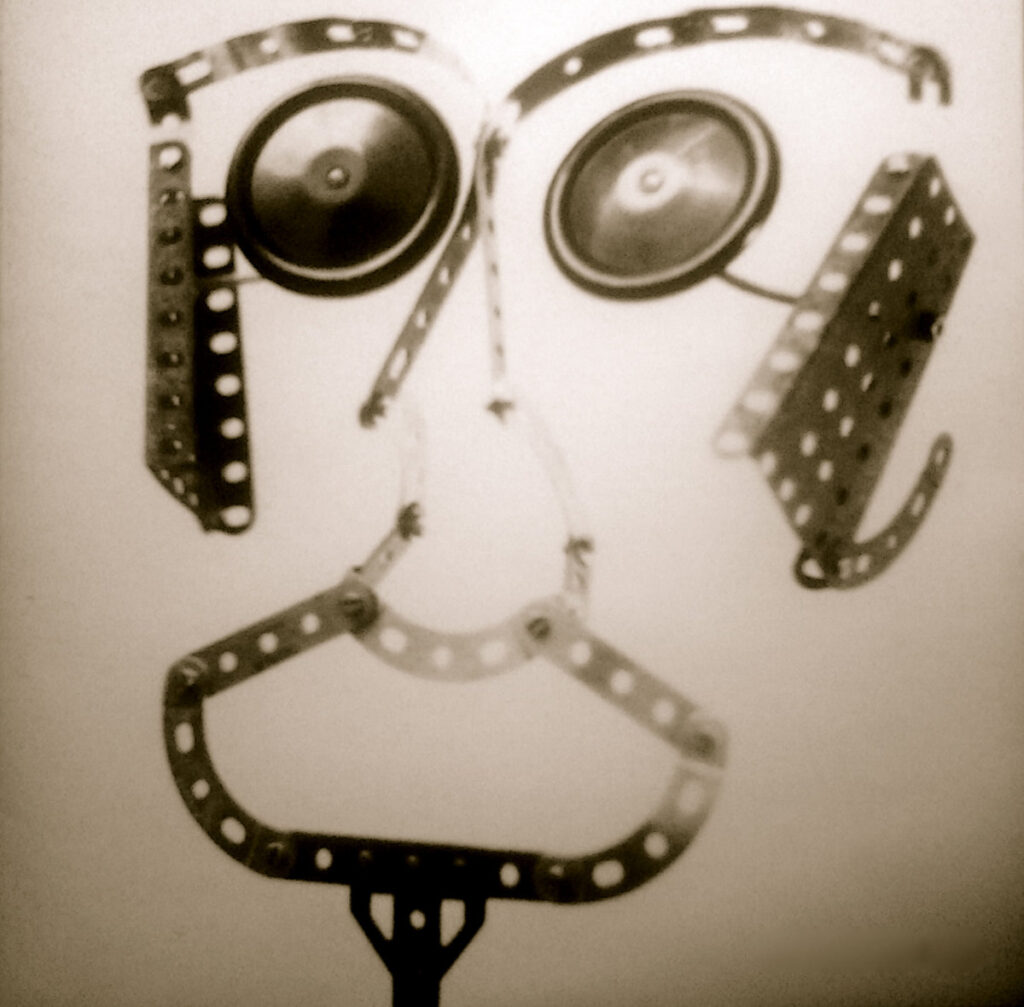
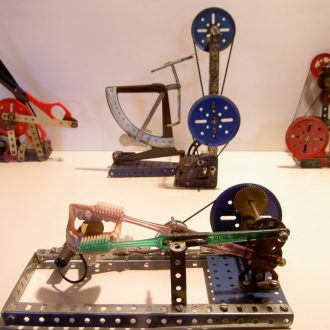
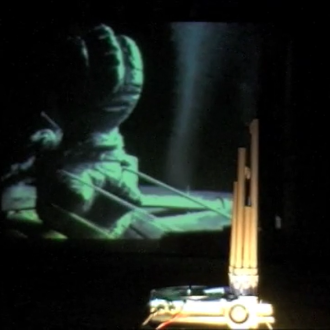
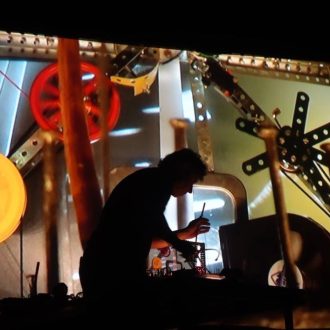
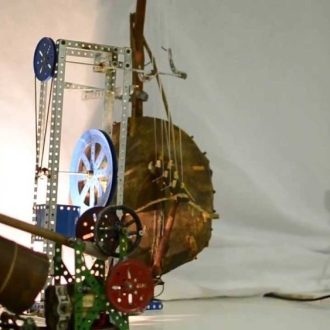

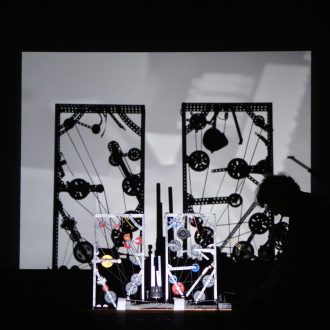
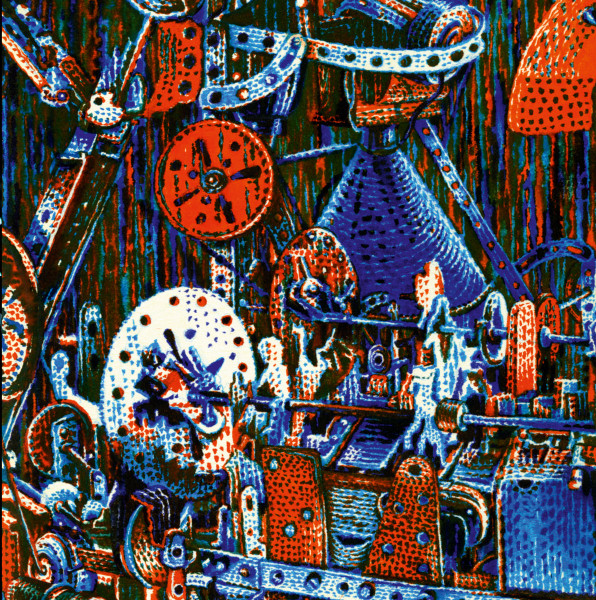
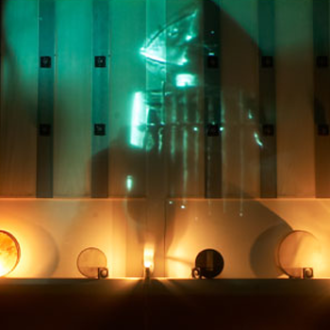
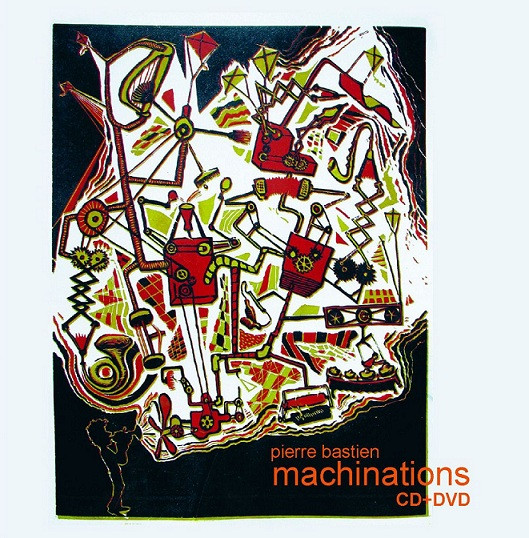
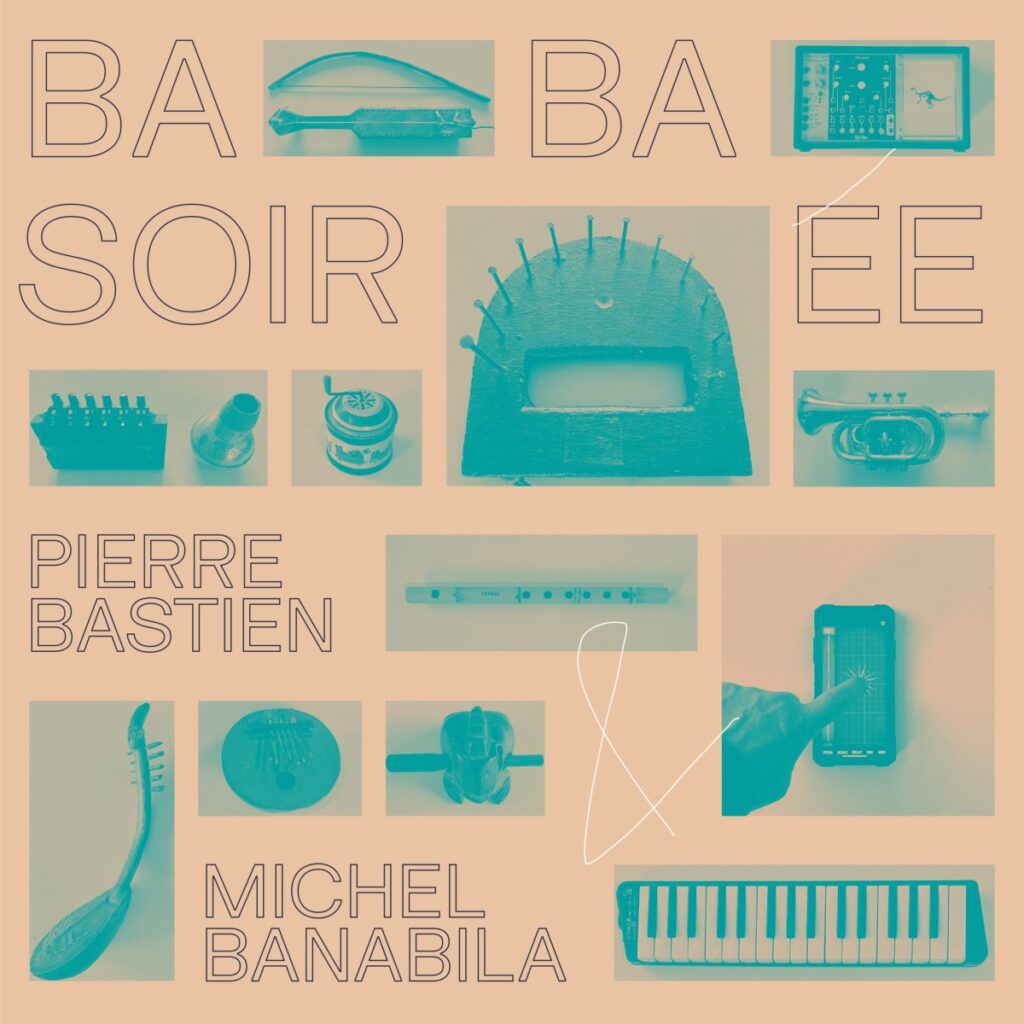
Pierre Bastien builds his own machineries, at the cross between music and visual art that blends live trumpet sounds with screen projections of on-site, mechanical sound sculptures in a very poetic way.
His work is described as “a timeless sounding orchestra, both futuristic and slightly dada, conjuring ancient traditions in its surprisingly sensuous music.”
Bastien has been called a “mad musical scientist with a celebrity following” by The Guardian.
Collaborating in the past with filmmaker Pierrick Sorin, fashion designer Issey Miyake, singer and composer Robert Wyatt and Aphex Twin (who released three of his albums on his label Rephlex) to name a few, he is one of the most influential experimental musicians working in the field.
In 1986 he formed his own self made one man orchestra, Mecanium and made over 30 records over the years.
***
“I like to combine a cello or a viola with a godje from Niger and a Javanese rabab: enthuses French musician and instrument builder Pierre Bastien. “It’s like in a city, where all the different cultures blend with one another: you get a richer palette of sounds.” Bastien enacts this interplay with his Mecanium, a Heath Robinson-like contraption which plays all kinds of instruments at one and the same time: its bows, drumsticks and plectrums can beat an African drum or Indonesian gamelan, play a thumb piano, kora and harmonium, and bow a violin, while activating an entire string quartet.
The mechanism that drives it is based on simple principles: intricate constructions built from Meccano parts and powered by motors taken from old record players activate the bows and sticks by means of gears and pulleys.
Yet Bastien’s bizarre contraption is more than just a hotchpotch of seemingly incompatible instruments: despite its apparent lack of sophistication, a Mecanium performance is a complex, emotionallv charged affair. This fragile, home-made orchestra executes elaborate and strangely moving symphonies, while the miniature pulleys and levers cast giant shadows on the wall behind them, and Bastien himself sits amid his mechanised instruments accompanying them on trombone, violin or musical saw.”
– Rahma Khazam in The
Wire magazine, Popular mechanics
***********************************************
“Depuis l’improvisation libre et la scène jazz inventive jusqu’aux cercles électroniques, Pierre Bastien est un artiste dont la grille créative unique le laisse libre depuis plus de 40 ans.
De son jeu de basse obstiné dans le mythique « Rock’n’Roll Station » avec Jac Berrocal et Vince Taylor au Bel Canto Orchestra de Pascal Comelade dont il fera partie dès les débuts, les collaborations de Pierre Bastien avec tout un cercle d’artistes singuliers ont été nombreuses au fil des années, l’amenant notamment à travailler avec Pierrick Sorin, Aphex Twin, Robert Wyatt et Issey Mikaye.
Le dispositif musical de Pierre Bastien, articulé autour d’instruments traditionnels,
de moteurs, d’objets et de papier, est à la croisée de la musique savante et populaire. (…) Organisés autour de machineries, miniatures et fragiles, mais aussi d’ombres, d’images et de superpositions, les concerts et installations de Pierre Bastien ouvrent un espace de visualisation, qui existe autant sur scène que sous nos paupières : flûtes d’outre-tombe, mains sans têtes, femmes musiciennes, boucles et bulles d’eau jouées à la trompette forment alors une matrice d’où s’éveille une singulière magie, celle des minuscules instants qui transforment certains concerts en grands moments.”
– Marie-Pierre Bonniol
***********************************************
Pierre Bastien
A los diez años de edad Pierre construyó una guitarra de dos cuerdas a partir de loselementos del juego educativo “Le Petit Physicien”. A los quince años elaboró su primera máquina con un metrónomo que golpeaba por un lado un platillo, por otro lado una sartén.
Unos años después empezó construyendo su propia orquesta, de robotes hechos de Meccano (el juguete de construcción) que tocan instrumentos del mundo, objetos usuales y ahora las mismas piezas del meccano. Con este “Mecanium” graba sus discos, actua, hace exposiciones de arte sónoro y ha colaborado con destacados artistas : Pierrick Sorin, Pascal Comelade, Robert Wyatt, Issey Miyake, Roberto Oliván entre otros.
Su música esta publicada por varios sellos : Gazul, G33G, InPolysons, Signature, Western Vinyl, Morphine Records, Discrepant, Marionette y Rephlex.
“Como todos empezé tocando el sonajero. Como muchos he proseguido atando un cartón a la rueda de la bicicleta para convertirla en una carraca automática. Como algunos he soplado en un pétalo de flor como si fuera un saxófono ; he imitado al viento por medio de una cuerda entorchada y un botón girando y zumbando ; he tocado melodías con un lápiz sobre los dientes abriendo la boca más o menos.
Sobre ese tipo de experiencias infantiles me apoyo todavía. Intento darlas un prolongamiento con las máquinas que construyo : de meccano e instrumentos musicales, de tocadiscos traficado, de viento y papel.
Esas actividades tempranas me parecen una tradición subvalorada de la música occidental. Quizás nuestra tradición esencial.”
AN INTRODUCTION TO MY WORK
In 1968 at the age of fifteen, I casually built a first sound automaton with the help of a metronome placed between two gongs. Drum machines and other advanced musical electronic equipment were very exclusive and not easily affordable at that time.
Even eight years later when I started working on sound robots more consistently, my analogue sequencer could not compete with the rich sounds I was getting from my little contraptions plucking and bowing some beautiful instruments.

Therefore I went on constructing machines out of electro motors, meccano parts and instruments from all over the world. Around the end of the century, the mechanical orchestra was a large 80-piece ensemble.
Watch on Vimeo: PLAY MECCANO PLAY
A second set of automatons was playing several record players, a third one was playing on daily life objects.
Watch on Vimeo: MECANOLOGIE
Watch on Vimeo: SOUL
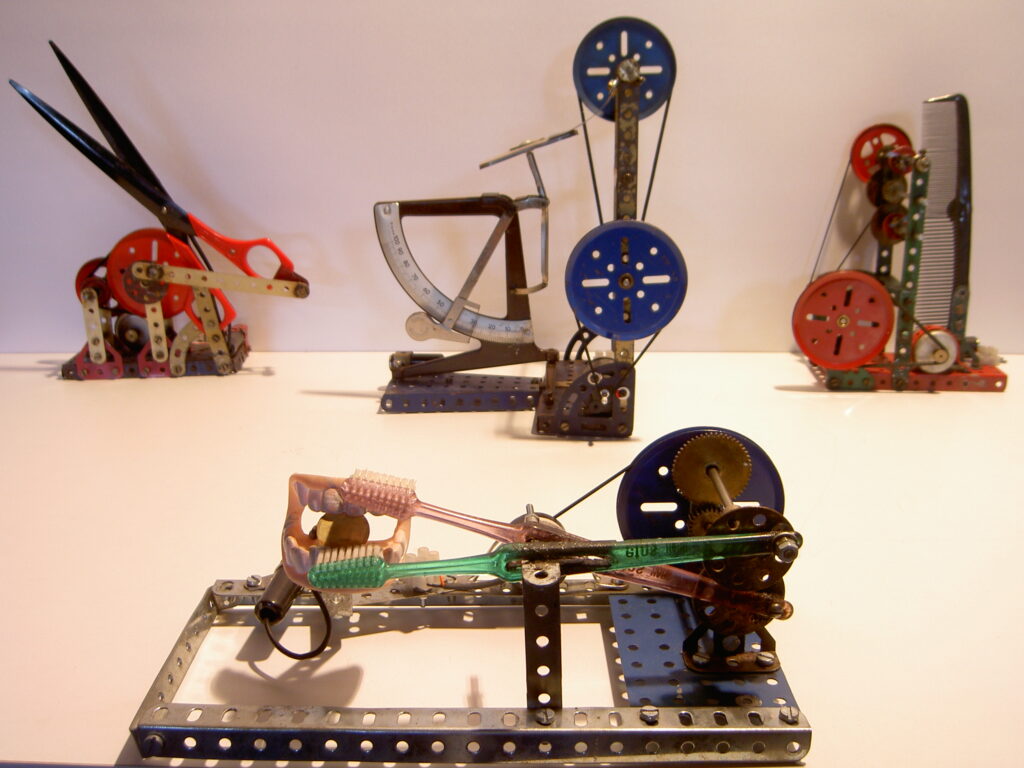
In the meantime electronic music had developed. While I was questioning my activity as maybe old-fashioned, Aphex Twin invited me to join his record label. Mecanoid (2001), Pop (2005) and Machinations (2012) were released on Rephlex.
Since 2000 I have built a series of more abstract sound sculptures. They don’t include identified instruments anymore: through interchangeable modules, they play on home-made sound systems.
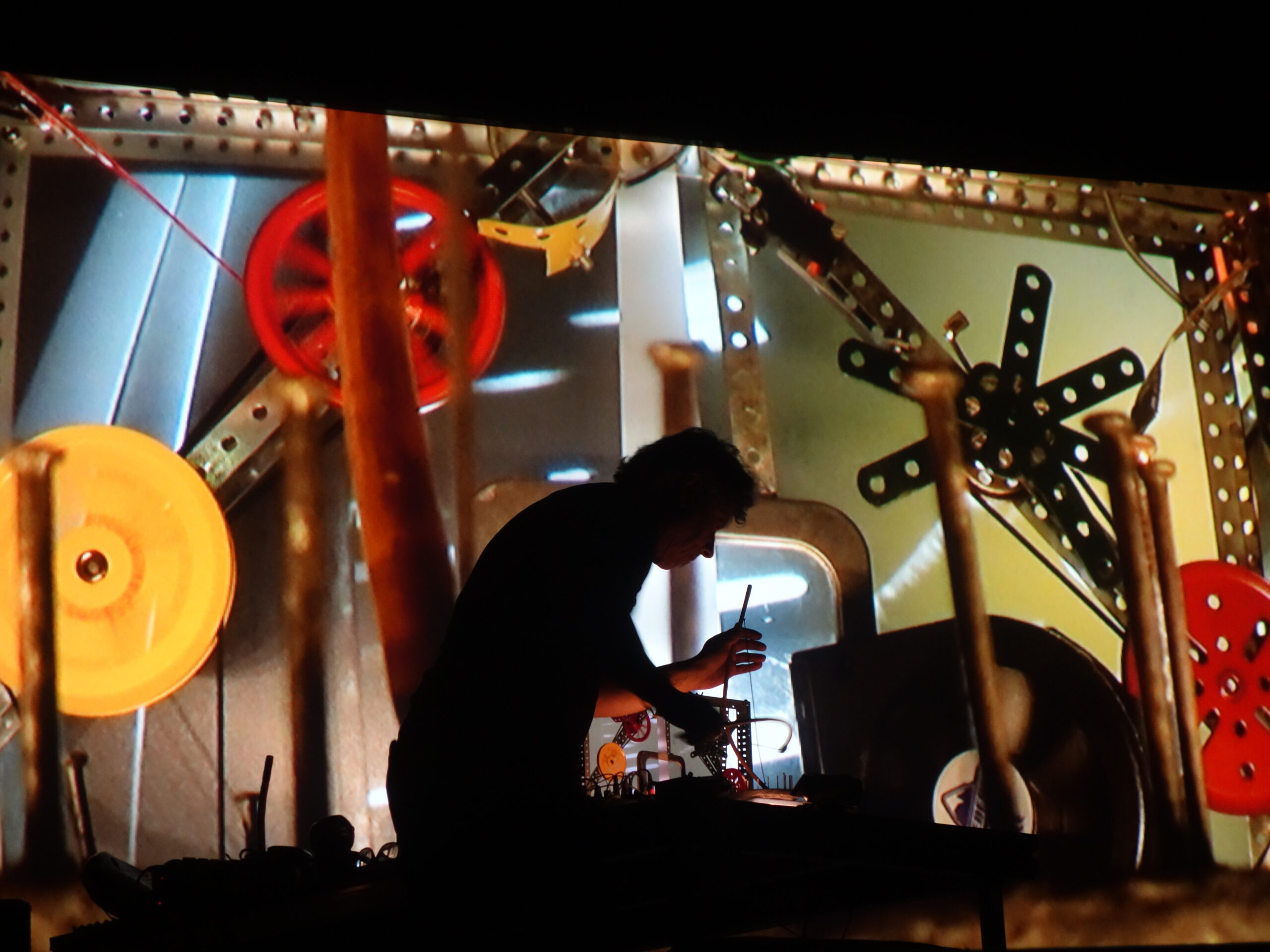
©Marie-Pierre Bonniol
The resulting machines not only work as orchestras: they are the score of the composition.
Instead of writing music on paper with a pen, I conceive it in metal with a screwdriver and a soldering iron. The performer is able to choose among several combinations, tempos and equalizations, making the music different each time but still part of the global composition.
Watch on Vimeo: MECANOID
Watch on Vimeo: UN ORCHESTRE DE PAPIER
Watch on Vimeo: PAPER ORCHESTRA